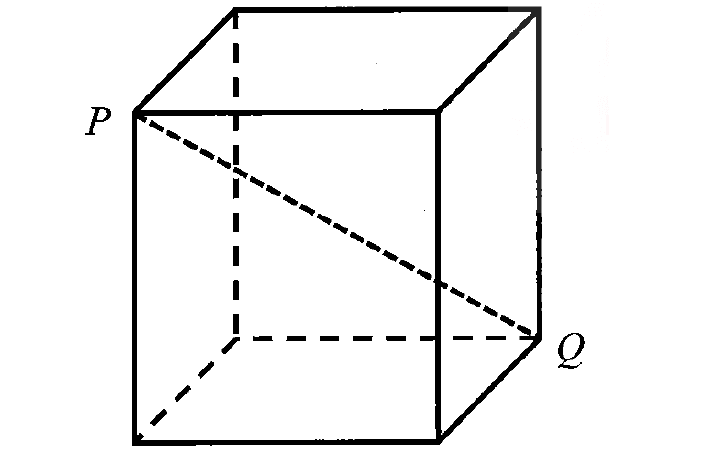FACTOR THEOREM PRACTICE QUESTIONS
Problem 1 :
Determine whether (x+1) is a factor of the following polynomials.
(i) 6x4+7x3-5x-4
(ii) 2x4+9x3+2x2+10x+15
(iii) 3x3+8x2-6x-5
(iv) x3-14x2+3x+12
Problem 2 :
Determine whether (x+4) is a factor of
x3 + 3x2 - 5x + 36
Problem 3 :
Using factor theorem show that (x-1) is a factor of
4x3-6x2+9x-7
Problem 4 :
Determine whether (2x+1) is a factor of
4x3+4x2-x-1
Problem 5 :
Determine the value of p if (x+3) is a factor of
x3-3x2-px+24
Problem 6 :
Find the value of a if the division of ax3 + 9x2 + 4x - 10 by x + 3 leaves the remainder of 5.
Problem 7 :
If -1 and 1 are two real roots of the polynomial function
f(x) = ax3 + bx2 + cx + d
and (0, 3) is the -y intercept of graph of f , what is the value of b?
A) -3 B) -1 C) 2 D) 4
Problem 8 :
If x + 3 is a factor of f(x) = ax2 + bx - 15 in which a and b are constants, what is the value of 3a - b ?
Problem 8 :
f(x) = -2(x2 + 7x - 3) - a(x + 2) + 1
In the polynomial f(x) is defined above, a is constant. If f(x) is divisible by x, what is the value of a ?
A) -5/2 B) -3 C) 7/2 D) 5

(i) Solution :
6x4+7x3-5x-4
By factor theorem, if p(-1) = 0, then (x+1) is a factor of
p(x) = 6x4+7x3-5x-4
p(-1) = 6(-1)4+7(-1)3-5(-1)-4
= 6-7+5-4
p(-1) = 0
(x+1) is a factor of the given polynomial.
(ii) Solution :
2x4+9x3+2x2+10x+15
By factor theorem, if p(-1) = 0, then (x+1) is a factor of
p(x) = 2x4+9x3+2x2+10x+15
p(-1) = 2(-1)4+9(-1)3+2(-1)2+10(-1)+15
= 2-9+2-10+15
= 0
So, (x+1) is a factor of the given polynomial.
(iii) Solution :
3x3+8x2-6x-5
By factor theorem, if p(-1) = 0, then (x+1) is a factor of
p(x) = 3x3+8x2-6x-5
p(-1) = 3(-1)3+8(-1)2-6(-1)-5
= -3+8+6-5
p(-1) ≠ 0
(x+1) ix not the factor of 3x3+8x2-6x-5.
(iv) Solution :
x3-14x2+3x+12
By factor theorem, if p(-1) = 0, then (x+1) is a factor of
p(x) = x3-14x2+3x+12
p(-1) = (-1)3-14(-1)2+3(-1)+12
p(-1) = -1-14-3+12
p(-1) ≠ 0
(x+1) is not the factor of x3-14x2+3x+12.
(2) Solution :
By factor theorem, if p(-4) = 0, then (x+4) is a factor of
p(x) = x3 + 3x2 - 5x + 36
p(-4) = (-4)3+3(-4)2-5(-4)+36
= -64+48+20+36
p(-4) ≠ 0
(x+4) is not the factor of x3+3x2-5x+36.
(3) Solution :
By factor theorem, if p(1) = 0, then (x-1) is a factor of
p(x) = 4x3-6x2+9x-7
p(1) = 4(1)3-6(1)2+9(1)-7
= 4-6+9-7
p(1) = 0
(x-1) is the factor of 4x3-6x2+9x-7.
(4) Solution :
By factor theorem, if p(-1/2) = 0, then (2x+1) is a
Factor of p(x) = 4x3+4x2-x-1
p(-1/2) = 4(-1/2)3+4(-1/2)2-(-1/2)-1
= -1/2+1+1/2-1
p(-1/2) = 0
(2x+1) is the factor of 4x3+4x2-x-1.
(5) Solution :
By factor theorem, if p(-3) = 0, then (x+3) is a
factor of p(x) = x3-3x2-px+24
p(-3) = (-3)3-3(-3)2- p(-3)+24
This implies that -27-27+3p+24 = 0
-30 + 3p = 0
3p = 30
p = 10
So, the value of p is 10.
(6) Solution :
Given that p(x) = ax3 + 9x2 + 4x - 10
Dividing p(x) by x + 3
x + 3 = 0
x = -3
p(-3) = 5
Applying the value of x in the given polynomial, we get
p(-3) = a(-3)3 + 9(-3)2 + 4(-3) - 10
5 = -27a + 81 - 12 - 10
5 = -27a + 81 - 22
5 = -27a + 59
5 - 59 = -27a
27a = -54
a = -54/27
a = -2
So, the value of a is -2.
(7) Solution :
Since -1 and 1 are solutions of the polynomial,
f(x) = ax3 + bx2 + cx + d
we apply these values one by one f(-1) = 0 and f(1) = 0
f(-1) = a(-1)3 + b(-1)2 + c(-1) + d
0 = -a + b - c + d
-a + b - c + d = 0 -----(1)
f(1) = a(1)3 + b(1)2 + c(1) + d
0 = a + b + c + d
a + b + c + d = 0 -----(2)
(1) + (2)
b + d = 0
Applying the point (0, 3) in the equation given
3 = d
Applying d = 3, we get
b = -3
So, the answer is option A.
(8) Solution :
Since x + 3 is a factor of the given polynomial, then x = -3 is the solution.
Applying -3 in the place of x, we get
f(-3) = a(-3)2 + b(-3) - 15
0 = 9a - 3b - 15
9a - 3b = 15
Dividing by 3, we get
3a - b = 5
So, the value of 3a - b is 5.
(9) Solution :
f(x) = -2(x2 + 7x - 3) - a(x + 2) + 1
= -2x2 - 14x + 6 - ax - 2a + 1
= -2x2 - 14x - ax - 2a + 7
= -2x2 - x(14 + a) - 2a + 7
Since the polynomial is divisible by x,
-2a + 7 = 0
2a = 7
a = 7/2
So, answer is option C.
Kindly mail your feedback to v4formath@gmail.com
We always appreciate your feedback.
©All rights reserved. onlinemath4all.com
Recent Articles
-
Digital SAT Math Problems and Solutions (Part - 151)
Apr 26, 25 11:18 AM
Digital SAT Math Problems and Solutions (Part - 151) -
AP Calculus BC Problems with Solutions
Apr 26, 25 05:49 AM
AP Calculus BC Problems with Solutions -
Digital SAT Math Problems and Solutions (Part - 150)
Apr 25, 25 11:46 AM
Digital SAT Math Problems and Solutions (Part - 150)
